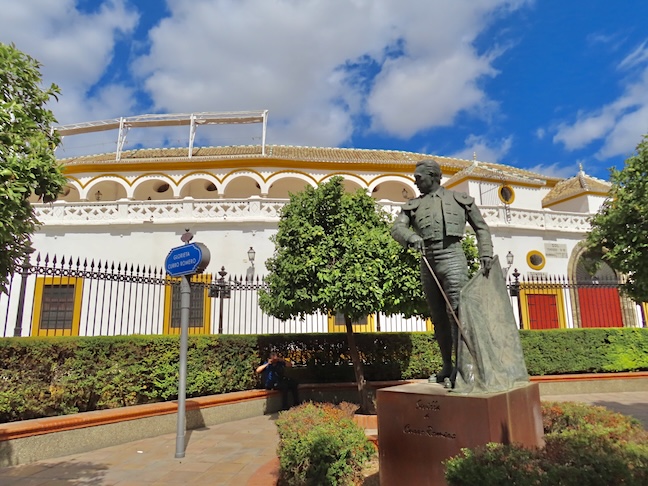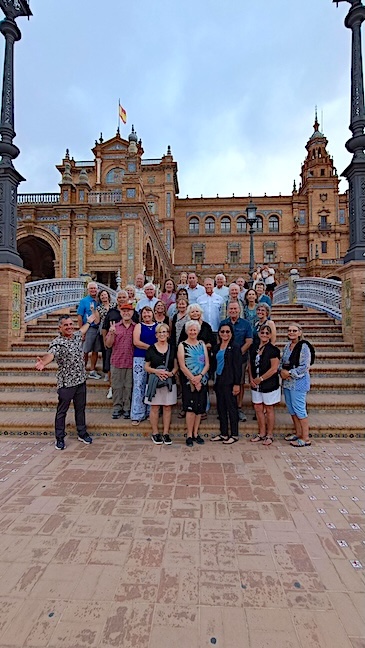Savilla was dubbed “Port of the Indies” during its heyday trading with the Americas. Today, our Rick Steves tour group will visit the Real Alcázar and later dine together to celebrate our wonderful 14-day Spanish adventure.

Alcázar means a Spanish palace or fortress of Moorish origin. The Alcázar of Sevilla began as an Islamic citadel in the 10th century. Instead of successive conquerors destroying it, each new ruler added to and remodeled the complex, keeping the most elaborately beautiful parts. The “Lion Gate” features a lion with a crucifix in its right claw and a flag in its left claw. It now serves at the Alcázar’s main entrance.

The main courtyard was built in 1364. The Palace of Peter the Cruel is in the middle, and the courtyard was used to assemble his hunting parties.

This Alcázar great room has six tapestries that cover 430 square feet. Five are depictions of military scenes during the expedition to Tunisia in 1535 led by Emperor Charles V, “The Magnificent.” The sixth tapestry is a map of the European continent and North Africa, portraying everything upside down created by a Flemish cartographer.

The “Gallery of the Grotesque” protective wall was built by Almohads in 1612. It overlooks a 15-acre garden that boasts 187 plant species from all over the world. The garden was a backdrop for the Kingdom of Dome scenes in The Game of Thrones series.

The elaborate gardens provided food and solace to the palace residents. The Royal Alcázar of Sevilla has been a royal palace for more than 1,000 years. The upper floors are still used by Spain’s royals.

Spain’s biggest and most significant bullring is the Plaza de Toros de Sevilla. It hosts the world’s largest bullfighting festival during Feria de Abril. Built from 1762-1881, it seats 13,000. The statue is Curro Romero, the famous bullfighter from Camas near Sevilla. His 42-year career earned him the nickname “The Pharaoh of Camas.”

Horse-drawn carriages have plied the streets of Sevilla since the 16th century. Rick Steves sprang for our entire group’s carriage rides to Plaza de España before our final dinner together. We entered the busy four-lane Avenue de Menéndes Pelayo, and the coachmen got into the racing spirit. It was a whimsical and exhilarating dash between the drivers to lead our procession through moderate traffic.

Plaza de España was built in 1929 for the Ibero-American Exhibition. It now houses government offices and has become Sevilla’s most famous square.

Our breathless group posed in front of the beautiful Spanish Renaissance-style buildings.

The carriage ride back was at a much more leisurely pace to savor the experience.

Donaire Azabache’s friendly staff set us up in a large room where we could compare travel memories and toast our success with new friends. The food was excellent, their sangria lucious, and the atmosphere charming.

Our tour guide Augustin Ciriza was knowledgeable, attentive, funny, and kind. He led our group with calm and soft-spoken firmness. We admire his ability and consider him our new friend. Augustin is “The Tourist Whisperer.”

